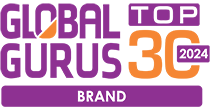How technology came to change the modern workplace
January 16, 2021
Computers and the internet have changed the world immeasurably in the last 40-or-so years and advancements in web technology have transformed all aspects of modern society – everything from how we communicate to how we shop and watch media.
However, while tech has had wide-ranging implications for most aspects of life, nowhere has its impact been felt more dramatically than in the worlds of business and employment. In particular, computers and mobile communications have transformed the modern workplace, while the internet has given rise to previously unimaginable opportunities to operate and trade in a global marketplace.
The rise of the machines
Now, in 2020, most industry and employment experts believe we are on the verge of the next great industrial revolution – the 4th industrial revolution – likely to feature a brave new world filled with automation, Artificial Intelligence (AI), machine learning and robotic workers.
With such an increase in our use of technology, work environments are about to change beyond all recognition and retraining will likely be required for many roles. Unfortunately, it also seems highly likely some jobs may disappear altogether as technology continues to usurp and replace human workers.
The potential for changes in the future
Historians often suggest the best way to predict the future is to study the past and it’s certainly true that previous changes across industry could point to what might be coming next in terms of employment prospects going forward. Just as previous industrial revolutions before it, the fourth revolution will bring huge changes in manufacturing processes and has the potential to fundamentally change several areas of work we have taken for granted for many years.
In the same way that the spinning jenny transformed the textile industry in the 1800s and robots replaced assembly-line workers through the last century, so AI will likely phase out many established jobs.
How coronavirus accelerated change and a reliance on technology
The recent coronavirus crisis caused the world to adapt in ways never before seen and distancing and lockdowns also had the unforeseen result of highlighting so-called “pointless” jobs. Industry experts have predicted for many years that these low-function, low-return jobs were most at risk of being phased out but as nations around the world came to rely more on technology through the virus, it became clear some roles simply weren’t required anymore.
For example, the offshore oil industry has had fully autonomous platforms for many years – yet continued to employ multiple human workers to aid in their upkeep and maintenance. With distancing forcing companies to concentrate more on remote working, it soon became clear these platforms could be operated perfectly well with a skeletal staff – leading to the superfluous employees being laid off.
There are thousands of examples of other roles that had their vulnerability exposed through the virus – receptionists, document supervisors, personal assistants, etc – in almost all cases, replaced by technologies capable of doing the jobs at least as well, if not better.
Moving forward into a new normal
As we slowly begin to emerge from the worst of COVID-19 and vaccines start being rolled out around the world, there are glimmers of hope for a return to normality soon. However, one thing is clear: the new normal that awaits us will be significantly different to our old way of life.
Indeed, when we come to look back at 2020 in the future, it’s very possible we’ll consider the year of coronavirus as the moment when the mass adoption of AI and technology finally took hold. With populations around the world having no choice but to follow distancing rules, we turned more and more to technology for our answers – and technology proved more than ready to step up.
A good example of the move to tech can be seen in the world of retail. The death of the traditional high street had been on the cards for many years, yet several retailers still managed to struggle on despite reducing sales and plunging profits.
When the coronavirus emerged, it hit the high street hardest with lockdowns forcing the closure of real-world stores and shoppers moving online in their droves. Consequently, any shop that wasn’t already positioned to offer sales via e-commerce saw their trade obliterated.
Almost without exception, the retailers who have weathered the COVID-19 storm best have been those that were already set up to operate online. Indeed, the same can be said for most industries and, in many ways, COVID-19 might well come to be considered the straw that broke the camel’s back when it comes to traditional working practices.
Those companies that survived – and even profited – through the virus had already embraced technology in their organizations and were already successfully operating online when the virus hit.
Technology has already transformed many jobs
The pace of technology has been relentless in recent years and was already transforming many sectors. E-commerce is the most obvious area where computers and the internet have changed an industry, however, tech has slowly been working its way into most roles and has completely changed how many jobs are performed.
Again, by taking a look at how tech has had the power to change jobs in the past, we might get a glimpse into its effects in the future.
Ways technology changed marketing
Not so long ago, the options for companies to promote themselves were rather limited – pretty much a case of established media channels like TV, radio, newspapers/magazines and billboard advertising. These days, there are almost limitless opportunities for company promotion, particularly online.
You can read more about the various roles played by the modern marketer by clicking here – but for a general overview, it’s worth considering just a few of the channels that marketers and advertisers now have at their disposal in the modern world:
Social media promotion: Perhaps the biggest change in the marketing landscape in recent years has been due to the huge popularity and following of social media channels. Where once companies had to actively encourage clients to visit their website for information, now, with a following on social media they can broadcast to the world. Social media sites have democratized publishing, allowing companies to contact their clients direct. However, it’s also worth noting, on their route to global domination, social sites have also disrupted many other platforms (e.g. newspapers, magazines, video sites, etc) forcing the closure of many previously profitable firms.
Search Engine Optimization: It’s estimated around 80% of business-to-business (B2B) inquiries start with a search on engines like Google so it’s more important than ever for companies to have a high ranking. Search Engine Optimization (SEO) is a set of detailed and involved processes used by web marketing specialists to ensure their clients appear in the first page results under keywords relevant to their industry.
Affiliate marketing: Using affiliate marketing, companies can increase their presence online by allowing third-parties to promote or sell their goods, in return for a small commission.
Email marketing: Direct email marketing has become increasingly popular as a way to stay in touch with clients, keep customers informed of new products/innovations and improve client/company relations.
How technology revolutionized the music industry
The music industry of today is unrecognizable from that even just a few years ago. Where once bands had no choice but to sign to labels for their music to be heard, social media and streaming music sites have allowed musicians to reach out directly to a much wider public, eager to hear new tunes.
Once-vital airplay on radio stations has been usurped by the number of likes or shares a track gets on social sites and bands have been able to build their own profiles online, negating the need for costly marketing and advertising budgets. Even the smallest group can find a massive following online these days.
With the invention of MP3 compression in the early ’90s, music could be stripped down to its bare bones, removing the extraneous tones and frequencies that are beyond the range of human hearing anyway and resulting in tiny file sizes. A typical 32Mb CD track could be compressed to around 3Mb – making it ideal for sharing (even over the slow dial-up connections common at the time).
Buying habits also changed irreversibly. These days, most people don’t buy music – rather, they lease it. CDs are rightly considered cumbersome compared to a cell phone capable of playing back millions of music files held in the cloud.
Also, as technology improved, artists were able to record their music on affordable home set-ups – removing the need to visit professional facilities.
However, while this all sounds great from the musician’s point of view, it’s also worth taking a second to think about how it impacted employment in associated sectors:
- Record stores went bust
- CD manufacturing declined
- Radio stations were squeezed to the brink of survival
- TV music shows found they no longer had an audience
- CD artwork was no longer required
- The number of recording studios reduced
- With so much music around, it became harder to make a profit as a musician
In each case above, multiple job losses came as a result of these new technologies – jobs that will never return again.
The takeaway
The world is changing and it’s clear that technology is going to play an integral role in the jobs of the future. As individuals, we have two options – embrace change and adapt to succeed in this new world or fight and go the way of the dodo.
There is little doubt, technology is here to stay.























